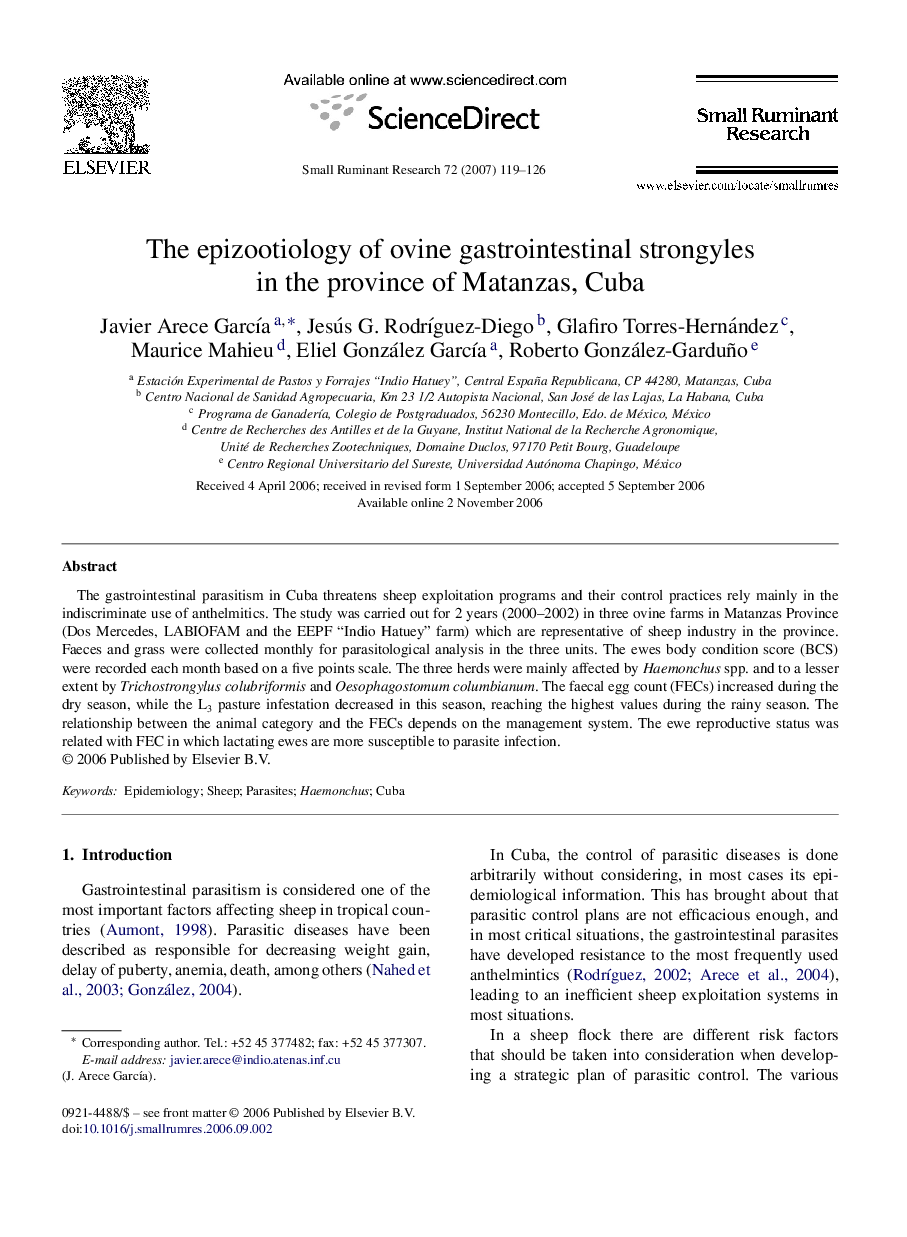| Article ID | Journal | Published Year | Pages | File Type |
|---|---|---|---|---|
| 2458258 | Small Ruminant Research | 2007 | 8 Pages |
The gastrointestinal parasitism in Cuba threatens sheep exploitation programs and their control practices rely mainly in the indiscriminate use of anthelmitics. The study was carried out for 2 years (2000–2002) in three ovine farms in Matanzas Province (Dos Mercedes, LABIOFAM and the EEPF “Indio Hatuey” farm) which are representative of sheep industry in the province. Faeces and grass were collected monthly for parasitological analysis in the three units. The ewes body condition score (BCS) were recorded each month based on a five points scale. The three herds were mainly affected by Haemonchus spp. and to a lesser extent by Trichostrongylus colubriformis and Oesophagostomum columbianum. The faecal egg count (FECs) increased during the dry season, while the L3 pasture infestation decreased in this season, reaching the highest values during the rainy season. The relationship between the animal category and the FECs depends on the management system. The ewe reproductive status was related with FEC in which lactating ewes are more susceptible to parasite infection.
